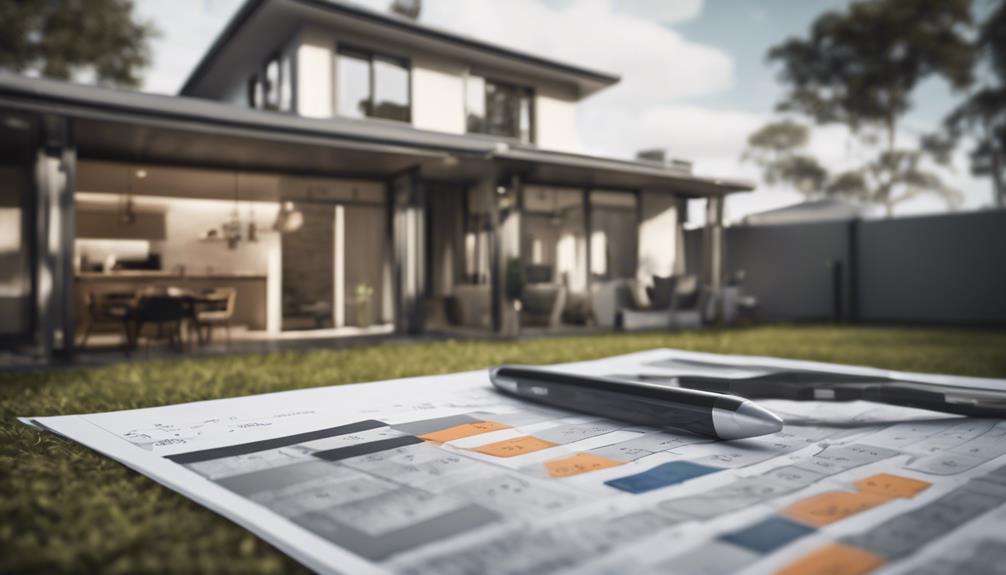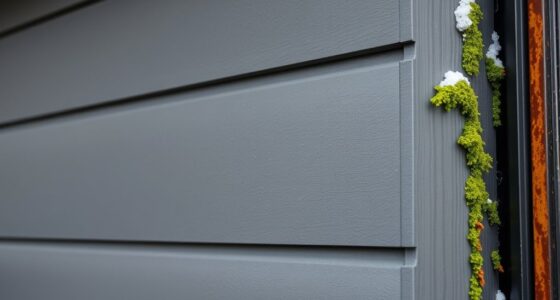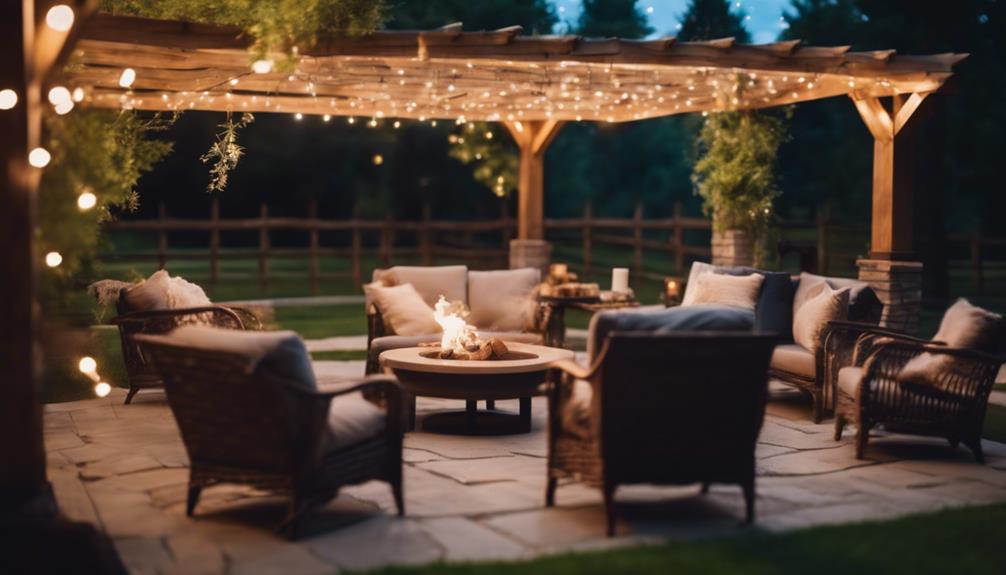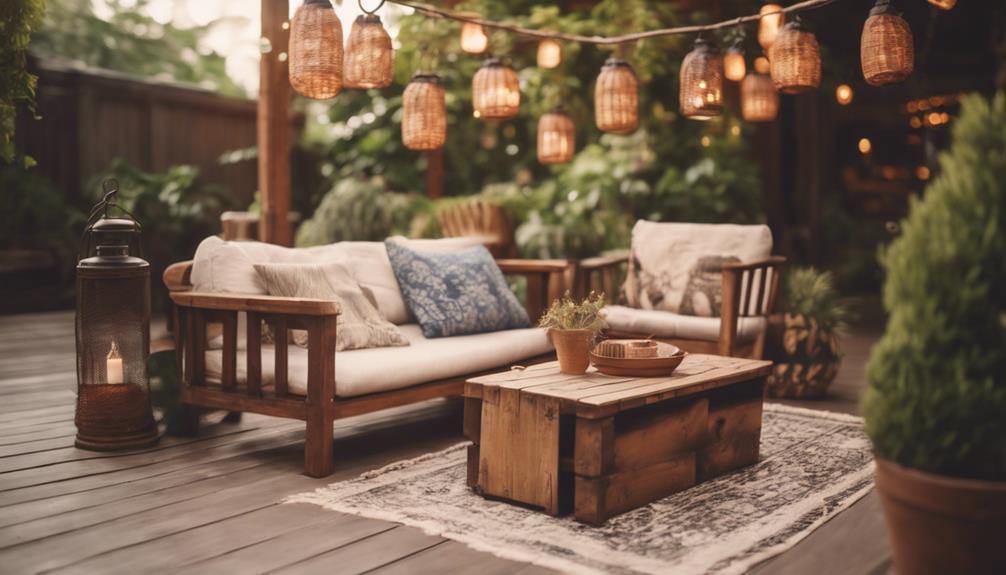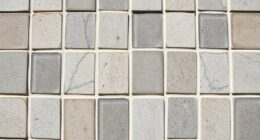When considering if floor area includes alfresco, it hinges on local regulations and building codes. Alfresco spaces vary in type, influencing floor area calculations. Specific criteria must be met to accurately include them. This impacts property valuation greatly and understanding guidelines is essential. Exclusion affects valuation and appeal, making clarity important. Measurement complexity arises from differing regulations, necessitating precise techniques. Professional consultation clarifies ambiguities and aligns with regulations for accurate calculations. Seek guidance on building codes and partner with experts for detailed insights into floor area calculations. For further details on this important aspect of property assessment, there's a wealth of information to explore.
Key Takeaways
- Floor area calculations may or may not include alfresco spaces, subject to local regulations.
- Alfresco areas impact property valuation but are typically excluded from official floor area measurements.
- Understanding guidelines for including alfresco areas is crucial for accurate property valuation.
- Consultation with professionals or local authorities helps navigate complexities in floor area calculations.
- Building consultants assist in measuring and accounting for alfresco spaces to align with regulations.
Definition of Floor Area
When calculating floor area with Alfresco, understanding the definition of floor area is vital. In real estate, floor area typically encompasses the Gross Floor Area of a property, including enclosed and habitable spaces within a building. This measurement is important for determining the total living space available in a property and plays a significant role in property valuations and assessments.
Alfresco areas, which are outdoor living spaces often attached to a property, may or may not be included in the floor area calculation, depending on local regulations. In some jurisdictions, alfresco areas under the main roof are considered part of the Gross Floor Area. Additionally, fully enclosed and habitable alfresco areas may also be included in the floor area measurement, further impacting the total living space of a property.
To accurately calculate floor area with Alfresco, it's essential to check local building codes and definitions to ascertain whether alfresco areas are to be included in the measurement. This guarantees transparency and compliance with regulations regarding property assessments and valuations.
Types of Alfresco Spaces
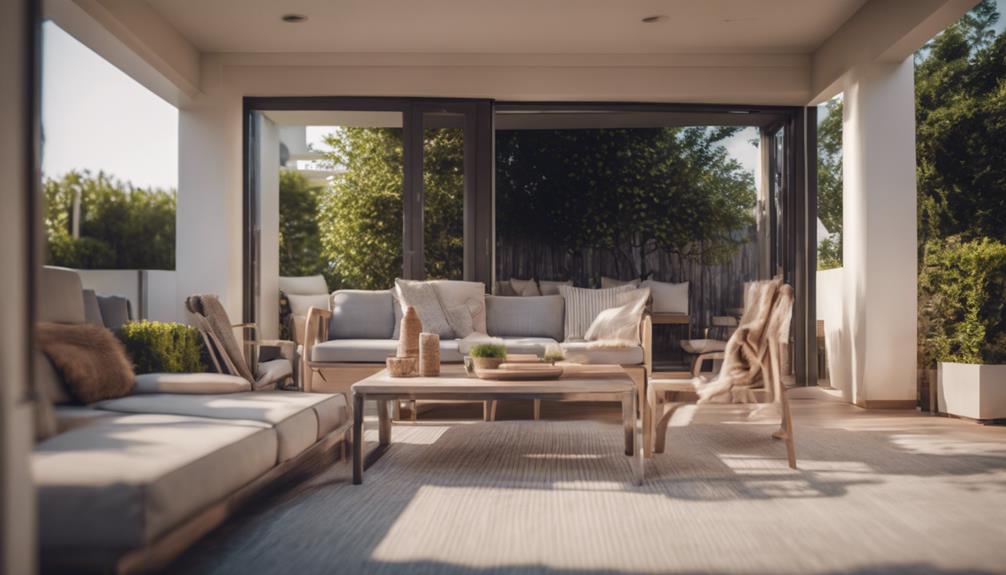
To further understand the calculation of floor area with Alfresco, it's important to explore the different types of Alfresco spaces available in residential properties. Alfresco spaces can vary in their design and integration with the main structure of a building.
Those under the main roofline are typically included in the gross floor area calculation, contributing to the total square footage of the property. Fully enclosed alfresco areas that seamlessly blend with the main structure are usually counted in the floor area measurement. However, separate structures or alfresco spaces not under the main roofline may not be included in the gross floor area calculations.
Therefore, it's essential to grasp the nuances of how alfresco spaces are designed and connected to the main building to accurately determine the total floor area of a property. Understanding these distinctions is pivotal in ensuring precise calculations of the floor area that includes alfresco spaces.
Criteria for Inclusion
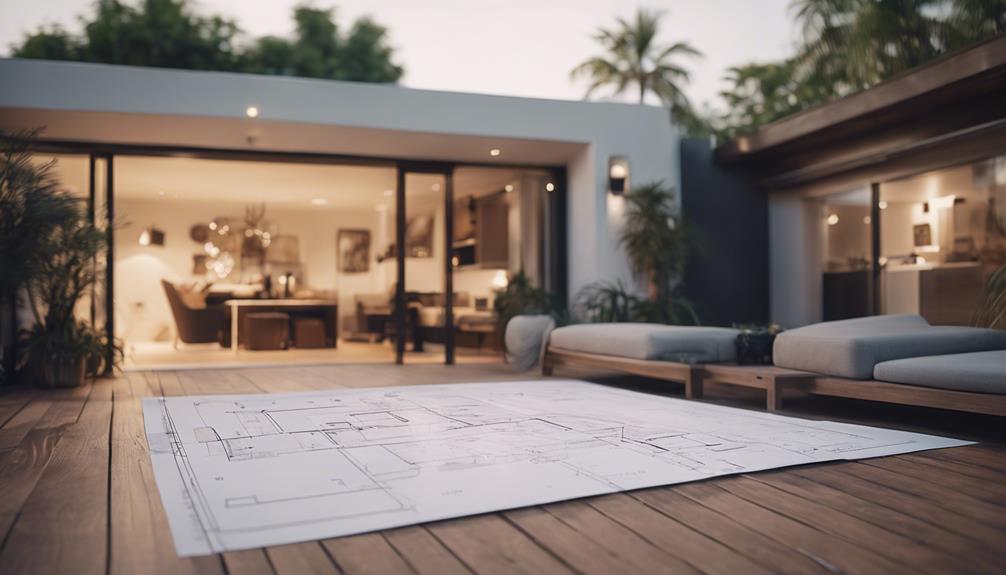
When considering the inclusion of alfresco areas in floor area calculations, various criteria must be met to guarantee accuracy. Factors such as the space being fully enclosed with walls and a roof play a vital role in determining its inclusion.
Understanding these criteria is essential for property evaluation and compliance with building regulations.
Alfresco Space Considerations
Consider the specific criteria for including alfresco spaces in floor area calculations to guarantee accuracy in measurements. Alfresco areas are typically not incorporated into gross floor area calculations, but there are exceptions based on local regulations. Fully enclosed alfresco spaces under the roof line might be included in the total floor area, while those with significant open sides, resembling carports, are usually excluded. To help you grasp these considerations better, let's look at a comparison table below:
| Alfresco Area Type | Inclusion in Floor Area Calculations |
|---|---|
| Fully Enclosed Alfresco | May be included |
| Open-Sided Alfresco (e.g., Carport) | Usually excluded |
| Covered Alfresco with Three Open Sides | Typically not included |
| Alfresco with Roof Extension | Considered in some cases |
Understanding these distinctions will aid in accurately determining the square footage of a property, ensuring compliance with relevant regulations.
Alfresco Area Calculation
Understanding the criteria for including alfresco areas in floor area calculations is essential for accurately evaluating property square footage. Alfresco areas, typically considered outdoor living spaces, may not be included in the indoor floor space calculation if they're under the roof line.
However, fully enclosed alfresco areas with heating or cooling systems may be counted in the gross floor area square footage. The key factor determining the inclusion of alfresco areas in floor space calculations is whether they're enclosed and conditioned.
To guarantee accuracy, it's important to adhere to the specific criteria outlined by local regulations. By following these guidelines, you can determine whether the alfresco area contributes to the overall floor space of the property.
Impact on Property Valuation

The exclusion of alfresco areas from the gross floor area calculation can directly influence the valuation of your property. While alfresco areas can enhance the appeal and value of a property, they're typically not included in the official floor area measurement.
This means that when appraisers or real estate agents assess the value of your property, they wouldn't consider the alfresco area as part of the total square footage. However, they may still highlight the presence of an alfresco area as a desirable feature that could potentially increase the property's overall worth.
Understanding this distinction is important as it may impact how potential buyers perceive the value of your property. By comprehending what's included in the floor area calculation, you can better evaluate your property's worth and make informed decisions regarding its valuation.
Guidelines for Measurements
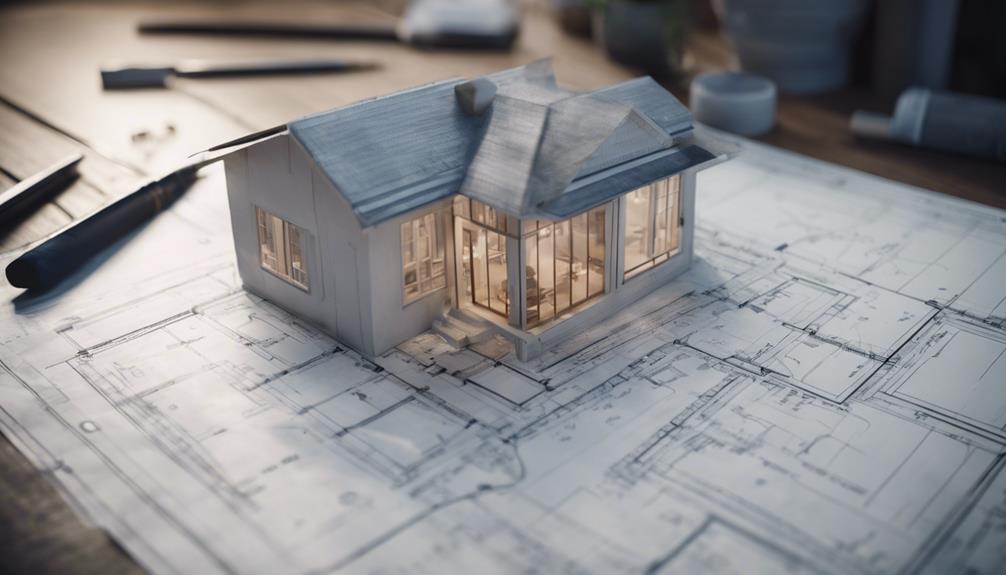
When determining floor area measurements that factor in alfresco spaces, it's vital to adhere to specific guidelines to guarantee accuracy in property valuation.
Alfresco areas are commonly excluded from gross floor area calculations in residential properties unless they meet certain criteria.
The key factor in deciding whether an alfresco area should be included in floor area calculations is if it's under the main roofline and enclosed.
Enclosed alfresco spaces with features such as walls and a roof may be considered part of the gross floor area, while open outdoor spaces are typically left out.
It's essential to understand the definitions and guidelines related to alfresco areas to ensure precise floor area calculations in building projects.
Appraiser's Perspective
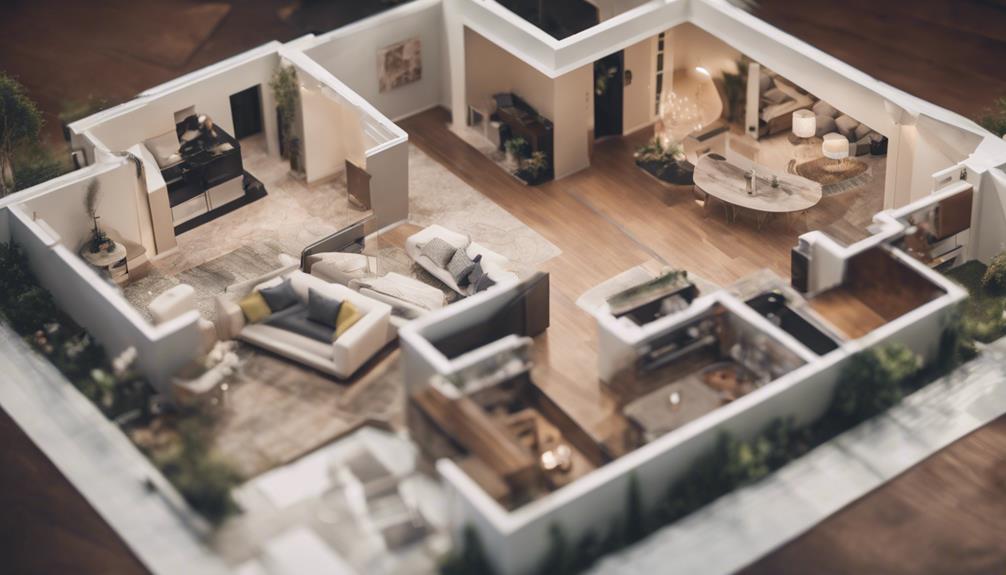
Considering alfresco areas in property valuation, appraisers typically factor in their design and functionality to determine their inclusion in the total square footage. These outdoor spaces, especially if integrated into the main living area, can have a substantial impact on the property's valuation and how it's perceived in the market. Appraisers carefully evaluate the alfresco areas that fall under the main roof line, analyzing their usability and design aesthetics.
Building Code Considerations
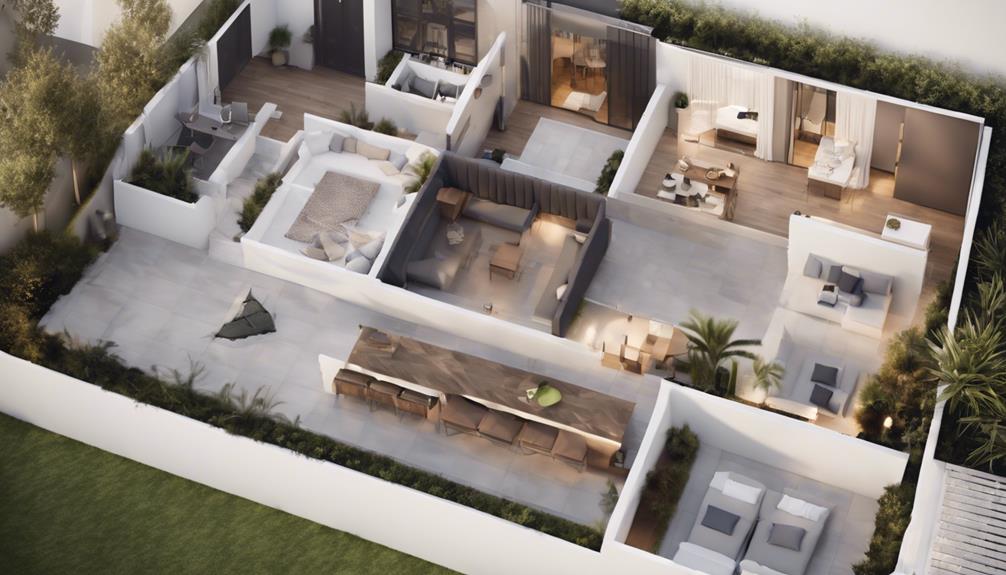
Understanding how building codes classify alfresco areas is essential for accurate floor area calculations and regulatory compliance. Building code considerations can have a notable impact on whether alfresco spaces are included in the total floor area calculations.
Here are some key points to keep in mind:
- Building codes may vary, but alfresco areas under the main roof line are often included in the total floor area calculation.
- Local regulations and definitions play a key role in determining whether alfresco areas are included in the total floor area calculations.
- Alfresco areas that are enclosed or integrated with the main living space may be counted as part of the gross floor area.
- Alfresco areas that are separate structures or not under the main roof line are typically excluded from the gross floor area calculations.
- The classification of alfresco areas can impact the overall square footage and compliance with regulations, so it's essential to be aware of the specific guidelines in your area.
Challenges in Calculation
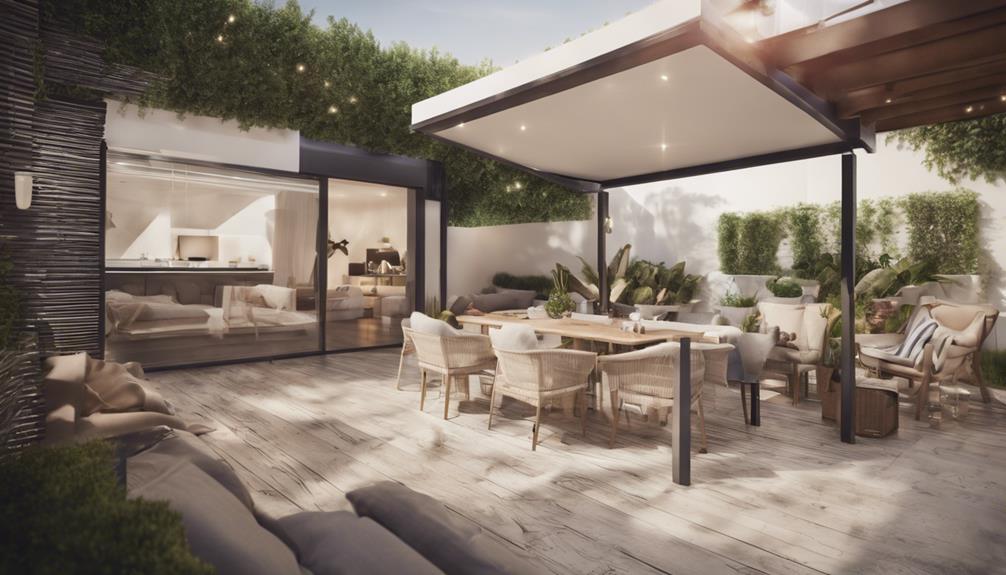
When calculating floor area with alfresco spaces, challenges arise due to the need for clarification on whether to incorporate these areas in the gross floor area.
The complexity of the calculation increases when distinguishing between indoor and outdoor living spaces, necessitating meticulous attention to detail.
Understanding the nuances of alfresco inclusion is crucial to guarantee accurate and consistent square footage measurements.
Alfresco Inclusion Clarification
One potential challenge in calculating floor area arises when determining the inclusion of alfresco spaces in the total measurement for granny flats in NSW. Understanding whether alfresco areas under the roof line count towards the 60sqm limit is essential for accurate floor area calculations.
Including an alfresco area can provide additional living space beyond the allowance, impacting the overall size of the granny flat. Carports, typically not counted in the 60sqm calculation due to having three open walls, add complexity to the measurement process.
Strategic design adjustments play a key role in optimizing alfresco areas for added functionality within the total floor area. To navigate these challenges effectively, it's vital to grasp the regulations and council guidelines governing the inclusion of alfresco spaces in floor area calculations.
Calculation Complexity Overview
Understanding the complexities of calculating floor area with alfresco spaces can present challenges due to differing regulations and definitions across jurisdictions. Jurisdictions vary in whether they include alfresco areas in floor area calculations, leading to confusion for property owners and developers.
The heart of the issue lies in the need for precise measurement techniques to determine the inclusion of alfresco spaces in floor area calculations accurately. It's essential to grasp the nuances of local building codes and definitions to ascertain the impact of alfresco areas on floor area calculations definitively.
To navigate this intricate landscape, seeking guidance from professionals or local authorities is paramount. Consulting with experts can provide clarity on whether alfresco areas should be considered in the floor area calculation, ensuring compliance with the specific regulations governing the property.
Professional Consultation Benefits
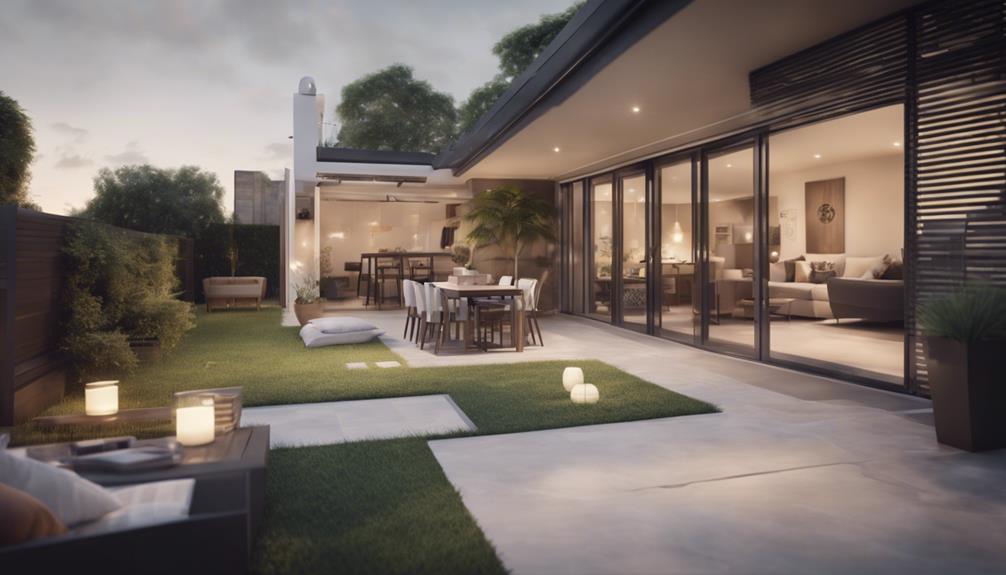
Seeking professional consultation when calculating floor area with alfresco spaces provides valuable benefits in ensuring accuracy and compliance with regulations. Building professionals offer expertise that can have a substantial impact on the calculation process.
Here are five key reasons why consulting with experts is essential:
- Clarity: Professionals can clarify ambiguous definitions and guarantee a clear understanding of what constitutes alfresco space.
- Guidance: Expert advice can lead you through the intricate web of local regulations, preventing costly mistakes and ensuring compliance.
- Precision: Building consultants assist in accurately measuring and accounting for alfresco areas, minimizing errors in floor area calculations.
- Compliance: Professional consultation ensures that your calculations align with regulations, reducing the risk of non-compliance and associated penalties.
- Confidence: By consulting with experts, you can have trust in the accuracy and reliability of your floor area calculations, providing peace of mind during property assessments.
Frequently Asked Questions
What Is Included in Floor Area Calculation?
In floor area calculations, indoor spaces like bedrooms, living rooms, and kitchens are typically included. Alfresco areas may or may not be part of the calculation, depending on local rules. Check with authorities for specific property details.
What Is Not Included in Gfa?
You know what's not included in GFA calculations? Outdoor spaces like alfresco areas. GFA zeroes in on enclosed habitable spots, excluding non-enclosed areas. So, alfresco spaces are typically left out when crunching building measurements.
How Do You Calculate Flooring Area?
To calculate flooring area, measure the interior living spaces excluding outdoor areas like alfresco zones. This approach guarantees an accurate representation of usable space within the property. Understanding these distinctions is essential for evaluating the true square footage.
What Areas of the Structure Are Not Included in the Square Footage Calculation?
When calculating square footage, remember alfresco areas, garages, and carports are excluded. Understanding what's not included helps assess usable living space accurately. Focus on enclosed, habitable spaces to determine the structure's square footage.
Conclusion
In summary, when determining the floor area of a property, it's important to carefully consider whether alfresco spaces are included.
While these areas can enhance the overall value of a property, their inclusion in floor area calculations can vary depending on specific criteria.
Consulting with a professional appraiser or real estate agent can provide clarity and guarantee accurate measurements are taken.
Understanding the nuances of floor area calculations, including alfresco spaces, is essential for accurate property valuation.
